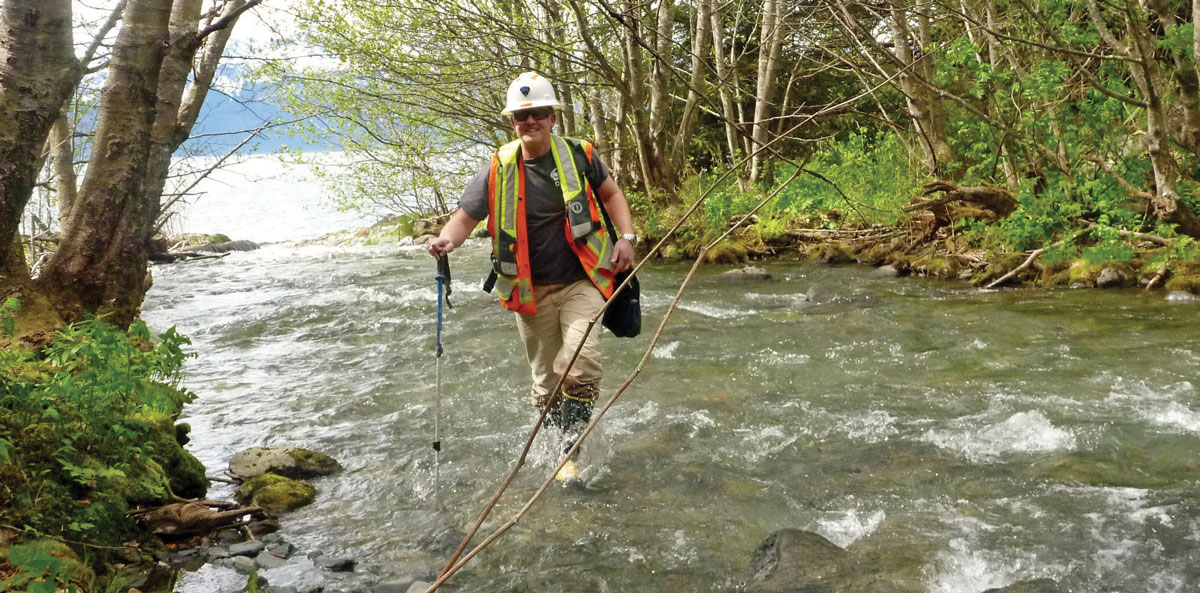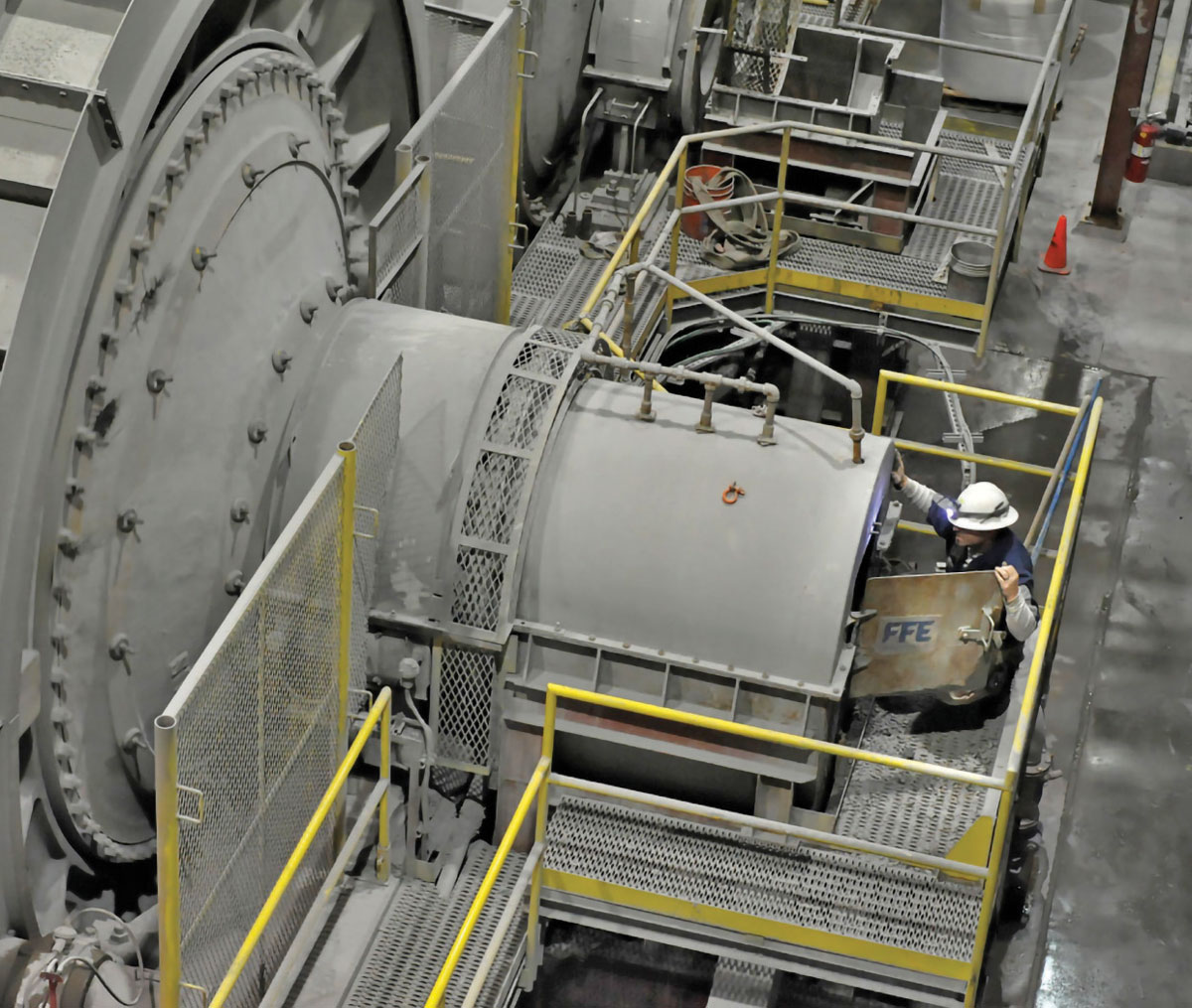laska’s resource development industry offers some of the state’s most lucrative jobs. But the trade-off for those hefty paychecks is logging time in some of the state’s most rugged locations and harshest climates, working long hours isolated from family for extended periods of time.
So the ability to recruit and retain a reliable, skilled workforce that can handle the technical, environmental, and even mental aspects of these jobs is a crucial component of a project’s success.
Most large companies have an equally large human resources (HR) department capable of overseeing the hiring process. Coeur Alaska, which operates the Kensington gold mine outside of Juneau, for example, typically handles hiring for both salaried and hourly positions, says Chrissi Gilbert, HR manager for Coeur Alaska.
Smaller companies, however, don’t always have the resources to handle mass hirings. Even companies that do often turn to outside agencies to handle the process.
“If we’re finding we’re having a hard time filling a position, or if we know it’s going to be a very specific skillset we know is going to be hard to find, we will use a recruitment firm,” Gilbert says.
Recruitment agencies are an often unheralded support service in Alaska’s resource development industry, working alongside HR departments to help find and woo the right worker for the job. And Alaska recruitment firms are uniquely positioned to meet their clients’ needs.
“Recruitment agencies in the Lower 48 who have a foothold in Alaska may specialize in one area,” explains Paula Bradison, CEO and managing director of Alaska Executive Search, which has provided recruitment and staffing services to Alaska businesses for more than forty years. “As an Alaskan-based firm, we’re just experts in Alaska.”
Recruitment firms help companies across industries fill a variety of positions—from oil and gas to mining, construction to healthcare, or administrative assistants to engineers—through temporary, contingent, or direct hires. And they do it through a combination of intense networking, word-of-mouth, and traditional recruitment practices.
Why would a company—especially large, multi-national ones—use a recruitment agency to fill positions rather than its HR department?
A lot of reasons, it turns out. And like most business decisions, those reasons usually come down to time and money.
“To recruit effectively requires a lot of time and effort to engage with the client and candidates,” says Debi Hartley, operations manager at Hawk Consultants, which works primarily with the oil, gas, and energy industries. “And a lot of times, the clients don’t have the time.”
Internal HR hiring processes typically include a request to recruit followed by preparation to conduct an internal or external job search, Bradison says. That means a delay between when HR is notified of a vacancy and when they can post a job. And when a project has a strict timeline, a delay of even one or two days can be costly.
Recruitment agencies, however, can begin the candidate search immediately.
“Employers often access recruiting companies to condense that process,” Bradison says. “With a job order approved, a recruitment team can commence a search within hours of the initial request.”
Budgetary constraints are another reason companies turn to recruitment firms, particularly when hiring for project-based positions. A budget may include headcount restrictions that limit the company to a certain number of direct hires—limits that don’t apply to agency, or contingent, hires, Hartley explains. In these cases, the contingent employee receives work direction from the company, but the recruitment firm is the actual employer.
“If they have limited-term, project-focused personnel, it makes more economic sense,” she says. “They don’t have the long-term fixed overhead cost, they don’t pay the benefits, and there are no headcount restrictions.”
Compared to HR departments, which are focused on the company’s day-to-day operations, a recruitment agency’s sole function is to identify, interview, and evaluate applicants, giving them an unmatched level of expertise in determining who is the best fit for a job.
“Staffing companies definitely can help companies because we’re doing this every day; that’s all we do. We’re like the experts at it,” says Terrie Froese, co-owner and staffing coordinator of TDL Staffing, which helps staff administrative, light industrial, and medical positions through its offices in Anchorage and Fairbanks. “Human resources, they’re doing compliance and other things on top of that, so that’s why a staffing company can be an addition to the HR department. We can help them.”
Recruitment agencies also lend a degree of objectivity to the hiring process.
“We have algorithms so to speak that we’ll set up in terms of weighted scoring for competency, experience, education, those types of things, so that we know that our opinion has been validated,” Bradison says. “We’re able to be really objective.”
Although recruitment agencies handle almost every step of the hiring process short of making the final decision, they don’t view themselves as supplanting a company’s HR department; rather, they consider themselves partners who work in tandem with the company to achieve a common goal.
“Really, we think of it very similar to recruitment departments that an HR department has,” Hartley says. “It is really just an extension of that, to be able to provide that same type of service. It’s just a support for them.”
Alaska Executive Search
Recruiters begin the applicant search long before they’ve received a job requisition. Extensive networking, word-of-mouth recruitment, and reaching out to industry and non-industry-related organizations—like industry associations, local Chambers of Commerce, jobs centers, colleges, and Alaska Native organizations—help them amass a pool of potential candidates they can pull from when jobs become available.
This expanded resource pool of thousands of potential candidates means agencies can begin reaching out to qualified potential candidates immediately, on top of seeking candidates through traditional means, such as posting on websites and job boards.
“The advantage of working with a staffing firm, our clients tell us, is by the time they come to us we already have a bunch of people we already know we can reach out to,” Bradison explains. “There are very few industries where we have to start from scratch.”
Recruitment agencies typically handle every aspect of the hiring process, from vetting applicants to conducting interviews to whittling down the number of candidates they forward to the client, says Debbi Miller, co-owner and partner of TDL Staffing. They also verify prior employment, conduct reference checks, arrange for any required pre-employment screening, and perform testing assessments where necessary, she adds.
Ensuring potential employees have the required technical competencies the job requires, such as education, experience, skillsets, and any job-related certifications, is one aspect of the recruitment process, Miller says. Alaska experience is another, and agencies and companies alike look to hire Alaskans first.
“Our preference is absolutely to hire Alaskans,” says Rochelle Lindley, Coeur Alaska’s community and government affairs manager. “The best thing is to hire people who are from here. It’s already their home, they’re already settled here.”
Coeur Alaska

Coeur Alaska
Because working and living even in Alaska’s less rugged locations is different from living and working down south, recruiters do their best to determine whether an outside candidate can successfully adapt to Alaska’s environment.
“We hire for Alaska first, and then the employer second, because we know it won’t work out any other way,” says Bradison, who estimates that 88 percent to 92 percent of AES hires are Alaskan. “There are some behavioral things that we look for, [and] we ask a lot of questions about lifestyle when we’re talking about Alaska. We want them to be happy once they get here, and the worst thing we can do is talk someone into a position where they’re not committed.”
Being clear about the working conditions and the job location also helps ensure applicants understand everything the job entails.
“We’re always open and honest in our interview process and explain where we’re at—it takes a bus ride, then a boat ride, then another bus ride to get to the mine. It rains. So, we’re very honest in talking about those types of things,” Gilbert says.
Laurie Fuglvog, an employment security analyst with the Department of Labor and Workforce Development, says the division recommends that applicants new to the seafood processing industry watch its Seafood Employment Orientation, which is available online, before applying for seafood processor positions.
Depending on the job location, some companies make Alaskan hire, or at least prior Alaska work experience, a condition of employment.
“Sometimes a client will specify they have a requirement that [the candidate] has North Slope experience, and sometimes they’ll just have a preference,” Hartley says. “But we definitely will look for prior Arctic experience, because we recognize the unique challenges that the North Slope presents.”
Matching experience and skill set to the job’s qualifications is arguably the easier part of the hiring process—candidates either have the desired skills and experience or they don’t. But recruiters want more than “just a live body” to fill a position, Miller says. “We want the skill set to match along with the personality that the manager is looking for.”
That involves looking at a combination of factors to ensure the candidates they recommend are a good fit.
“We’re looking for clues all the time as we put all of these together as one package,” Froese explains. “Our interviews are pretty extensive. We ask a lot of personal questions, a lot of questions about where they worked in the past and what they’re looking for in the future, so hopefully we get a lot of information out of them.”
Coeur Alaska
Coeur Alaska

But without personal experience of a company’s workplace culture, ensuring the candidate has the right personality to match the position can prove challenging.
That’s why vetting the client is just as important as vetting the candidate.
“We have learned to interview our clients in a way that gives us some pretty key indicators of the type of person we’re looking for,” Bradison says. “We have about a 20- to 25-minute onboarding with the client, asking them a lot of strategic questions that have nothing to do with hiring, and that helps us quite a bit.”
Site visits also help recruiters gain a deeper understanding of both the workplace culture and working conditions at the job location, which improves their ability to offer potential candidates an accurate description of the position and ensures a good fit. They also solidify recruiters as a trusted part of the team.
“We go out and see the industry where [the client] is working; we want to see the location,” Miller says. “We go into the business so we can walk and interview with the client so we can get a better feel for that [workplace culture], because we’re not there every day. We’re helping them evaluate their needs. Making that physical touch out there to the client is really important.” ![]()